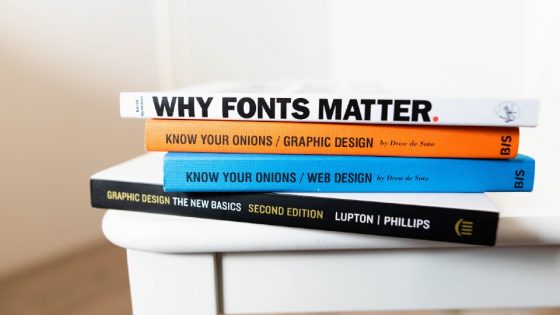Creative design within the marketing sector has seen significant shifts, influenced by technological innovation, evolving consumer preferences, and a greater emphasis on sustainability and inclusivity. As these trends shape the visual and experiential facets of branding and advertising, they not only redefine the aesthetics of marketing but also underscore the strategic approach businesses must adopt to remain competitive and relevant.
One of the most prominent trends is the rise of bespoke typography. Brands are moving away from generic fonts to create unique, custom typefaces that embody their identity and values. This customisation adds a distinctive character to marketing materials, offering a subtle yet powerful tool for brand recognition. Monotype’s bespoke typeface for the Tate Gallery is a prime example, reflecting the museum’s contemporary and innovative ethos.
Sustainability in design has also taken center stage. The use of eco-friendly materials in packaging and print marketing is no longer a niche appeal but a widespread expectation. Companies like Unilever and Lush Cosmetics are leading the charge, employing recycled materials and reducing waste in their packaging design. This shift is a response to consumer demand for environmental stewardship and the UK’s aggressive sustainability targets. Consequently, marketers must weave eco-consciousness into their design narratives.
Another trend transforming creative design is the integration of augmented reality (AR) and virtual reality (VR). These technologies offer immersive experiences that elevate traditional marketing into interactive adventures. For instance, IKEA’s AR app allows customers to visualise furniture in their homes before making a purchase, blending utility with engagement. As the costs for AR and VR technologies decrease, more businesses are likely to harness these tools for interactive campaigns.
The push for diversity and inclusivity in design has also become a pivotal trend. Marketing campaigns are increasingly showcasing a broader spectrum of races, body types, ages, and abilities, reflecting society’s diversity more accurately. This inclusivity not only resonates with a wider audience but also aligns with the UK’s progressive stance on social issues. It’s a powerful statement that authenticity and representation matter in every aspect of business, including design.
Lastly, the trend towards minimalism and functional design continues to influence marketing materials. Clean lines, ample white space, and restrained colour palettes underscore a brand’s message without unnecessary clutter. Apple’s marketing is the epitome of this approach, where the focus is on the product and its features in a sleek, understated layout.
As these trends converge, they prompt a re-evaluation of the role of creative design in the marketing sector. It’s no longer just about aesthetics; it’s about creating an authentic, engaging, and socially responsible brand experience. Marketers must navigate these trends with a keen understanding of their audience and the cultural zeitgeist, ensuring their strategies are not just visually appealing but also resonate on a deeper level with consumers’ evolving expectations.
Are you on the hunt for Creative Design solutions for your brand? The Digital Marketing Solutions Summit can help!



